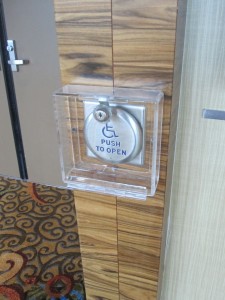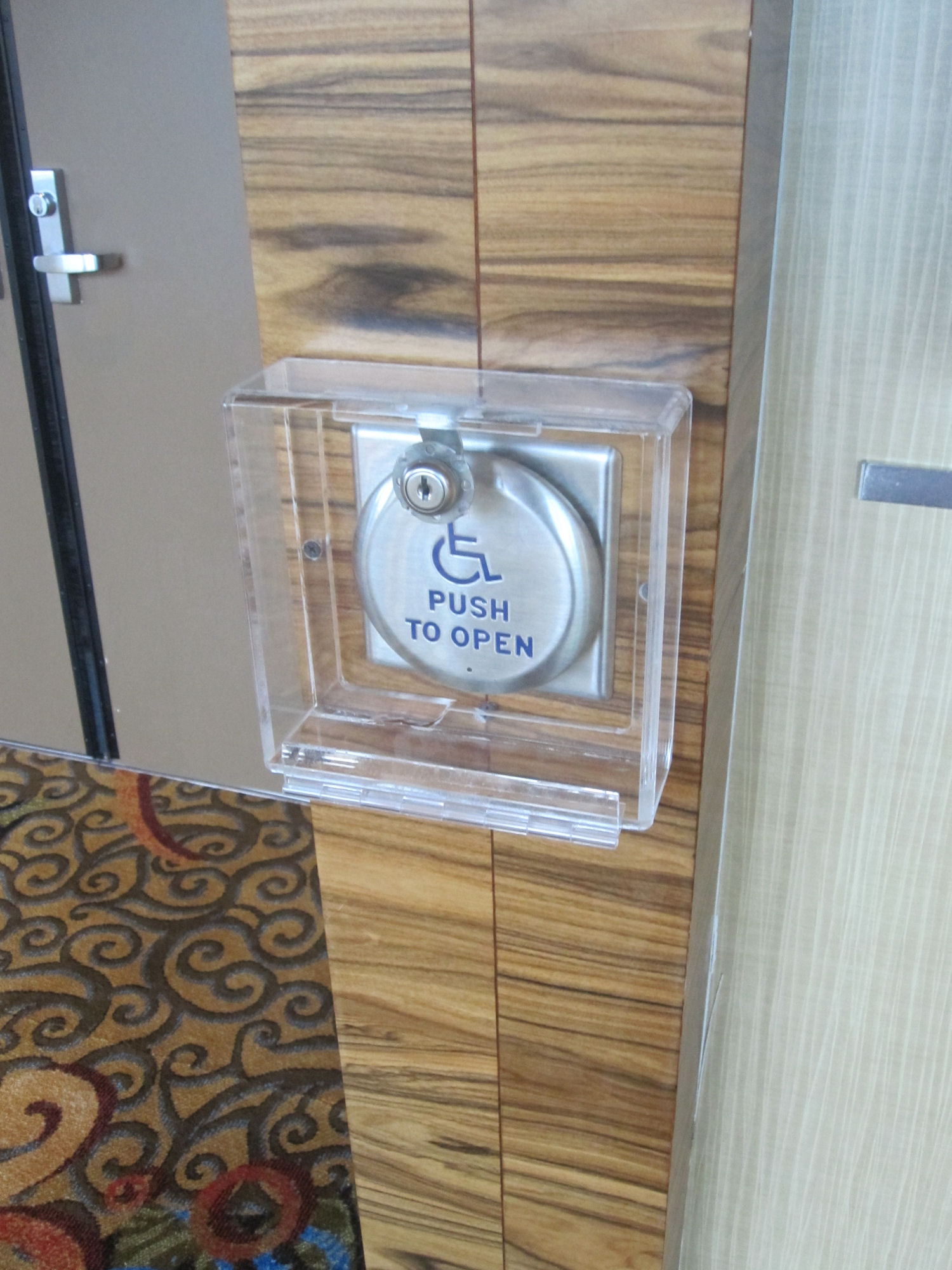 Here’s another interesting application that I saw at Foxwoods. These plastic covers were on all of the automatic operator actuators in the conference center.
Here’s another interesting application that I saw at Foxwoods. These plastic covers were on all of the automatic operator actuators in the conference center.
These are being used for one of two purposes, I’m not sure which: 1) the cover prevents people from pushing the button when the door is latched, which causes undue strain on the operator, or 2) pushing the button retracts the latch and unlocks the door before the auto operator opens it, which is obviously a security issue.
It’s probably #1, but either way there are other methods of accomplishing this. A switch or the access control system can deactivate the exterior actuator when the door is locked, or an LX switch can be used to make the exterior actuator active only when the latch is retracted.
In case you missed my earlier post about the code requirements for a “knowing act” to operate a low-energy operator, and the recommended locations for auto operator actuators, you can find it here.
You need to login or register to bookmark/favorite this content.






Lori,
When the Actuator is not operable, do the doors still need to meet the opening force requirements even if the building was built before the opening force requirement was added to the codes?
The opening force requirements have been around for a really long time, since before this particular building was built. But if it was a 100-year-old building I think the ADA guidelines would kick in, and the facility would have to meet the opening force requirements unless it was not feasible to do so. In addition to accessibility guidelines, there are also opening force requirements for egress doors in the building code.
I’ve done a few posts on opening force in case you want to see the building code requirements:
http://idighardware.com/2009/02/door-opening-force/
http://idighardware.com/2009/05/opening-force-for-fire-doors/
http://idighardware.com/2009/08/opening-force-for-fire-doors-part-2/